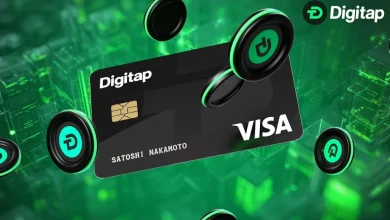
Polkadot raised millions and promised a Web3 revolution but failed to gain real user or developer traction.
Complex architecture, poor UX, and flawed parachain auctions drained momentum over time.
Despite major tech upgrades, DOT now trades under $5 with fading interest and low daily activity.
It raised millions, promised a Web3 revolution, and launched one of the most advanced blockchain systems ever built. But where is Polkadot now?
Crypto trader and analyst Nonzee (@0xNonceSense) just dropped a thread on X that’s making waves. It’s a 13-point postmortem on why Polkadot is fading fast.
“Polkadot is dead. Raised $500M. Promised a revolution. Now? No users. No devs. No future.”
Harsh? Yes. But the thread dives deep into how one of the biggest names in crypto lost momentum and why even brilliant tech doesn’t always survive.
Join us as we break it down.
It Started With Massive Hype
Back in 2017, Polkadot raised $144M in its ICO in minutes. Another $43M came through later rounds. By 2021, it looked unstoppable. DOT hit $55. Its market cap pushed $50 billion.
Everyone was calling it the next big thing, in fact it was called the Ethereum killer. And with parachains, shared security, and advanced design, it looked like the future of Web3.
But Users Never Came
Despite the tech, Polkadot struggled to get real users.
“No killer app, no sticky users,” Nonzee wrote.
Parachains launched, but none took off. The network stayed empty. By 2025, total daily users across all chains had dropped below 5,000.
Developers Left Too
Building on Polkadot wasn’t easy. It used Rust and Substrate – powerful tools, but hard to learn. Compared to Ethereum’s dev-friendly ecosystem, it felt like work. Devs slowly moved on.
In 2022, Polkadot had around 2,400 active devs. By 2024, that number had nearly halved.
Parachain Auctions Backfired
Locking DOT for two years to win a parachain slot? It sounded innovative but it drained momentum and locked up capital.
Projects slowed down. Users pulled back. It was too complex to keep up energy and growth.
Governance Got Messy
Polkadot had a bold vision for on-chain governance. But according to Nonzee, it ended up controlled by whales. In 2024 alone, over $129M from the treasury was spent with little to show.
Voter turnout dropped. So did trust.
Tech Upgrades Came But No One Noticed
Polkadot 2.0 launched with big improvements: faster consensus, agile scheduling, better scalability. But it was too late.
“It was fast. Scalable. Efficient. But the world had already moved on.”
What’s Left Today?
The architecture still works. Shared security. Interchain messaging. It’s all still there but barely anyone’s using it.
DOT trades under $5. Most of the hype is gone. As Nonzee puts it:
“Polkadot proves tech doesn’t equal traction.”
A tough truth in crypto: building great systems isn’t enough. Without users, narrative, and momentum – even the best chains may not survive.
Never Miss a Beat in the Crypto World!
Stay ahead with breaking news, expert analysis, and real-time updates on the latest trends in Bitcoin, altcoins, DeFi, NFTs, and more.
FAQs
Polkadot struggled to gain users due to a lack of “killer apps” and a complex developer experience using Rust and Substrate, which were harder to learn than Ethereum’s tools. Its user experience was also cited as poor, leading to low daily activity.
The parachain auction model backfired because it required projects to lock up DOT tokens for two years, draining capital and momentum. This complexity and long lock-up period hindered project development and user participation, slowing growth.
Despite Polkadot 2.0 introducing significant improvements like faster consensus, agile scheduling, and better scalability, it was perceived as “too late.” The network had already lost considerable user and developer momentum, and the upgrades didn’t re-ignite sufficient interest.
Trust with CoinPedia:
CoinPedia has been delivering accurate and timely cryptocurrency and blockchain updates since 2017. All content is created by our expert panel of analysts and journalists, following strict Editorial Guidelines based on E-E-A-T (Experience, Expertise, Authoritativeness, Trustworthiness). Every article is fact-checked against reputable sources to ensure accuracy, transparency, and reliability. Our review policy guarantees unbiased evaluations when recommending exchanges, platforms, or tools. We strive to provide timely updates about everything crypto & blockchain, right from startups to industry majors.
Investment Disclaimer:
All opinions and insights shared represent the author's own views on current market conditions. Please do your own research before making investment decisions. Neither the writer nor the publication assumes responsibility for your financial choices.
Sponsored and Advertisements:
Sponsored content and affiliate links may appear on our site. Advertisements are marked clearly, and our editorial content remains entirely independent from our ad partners.








